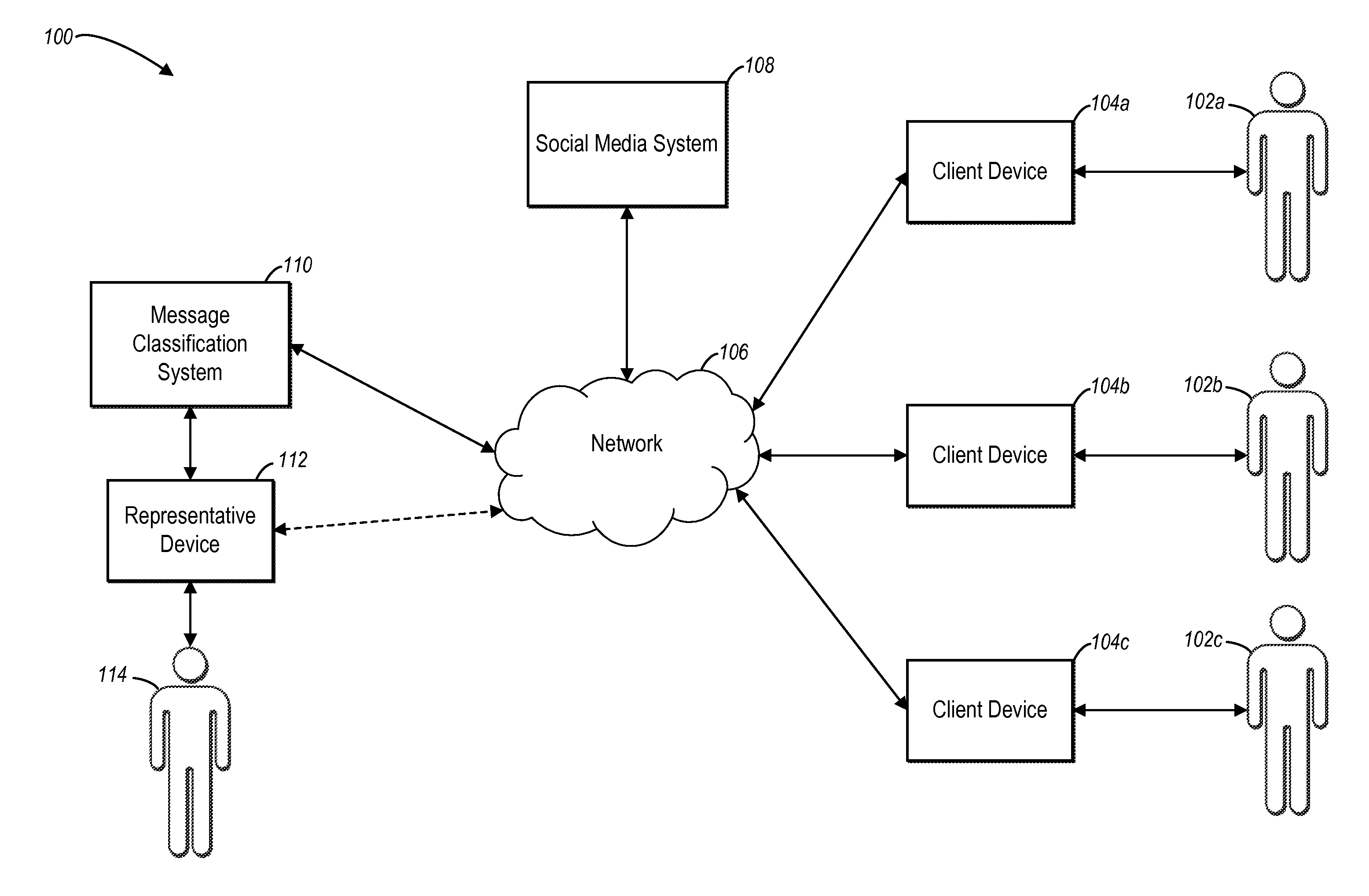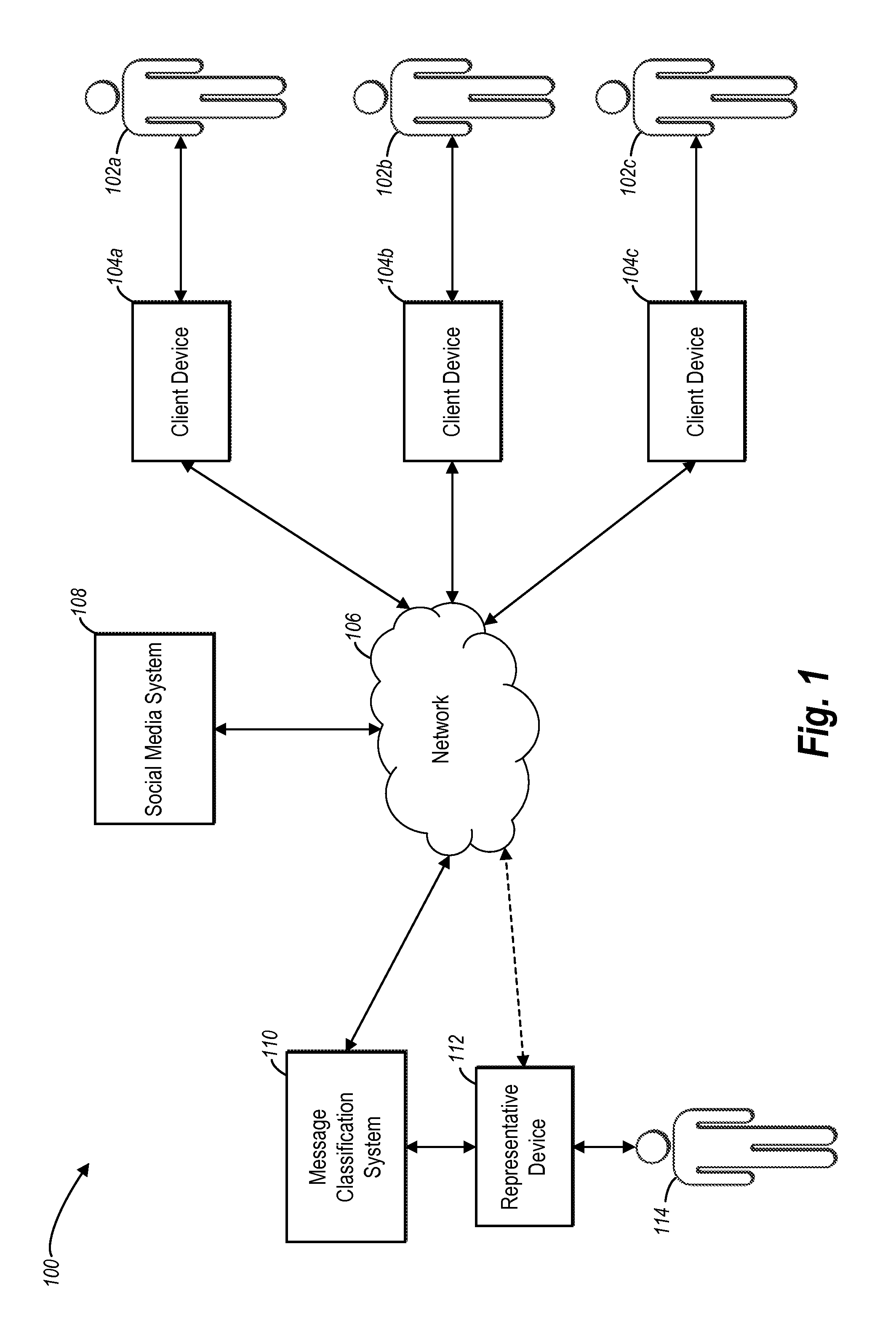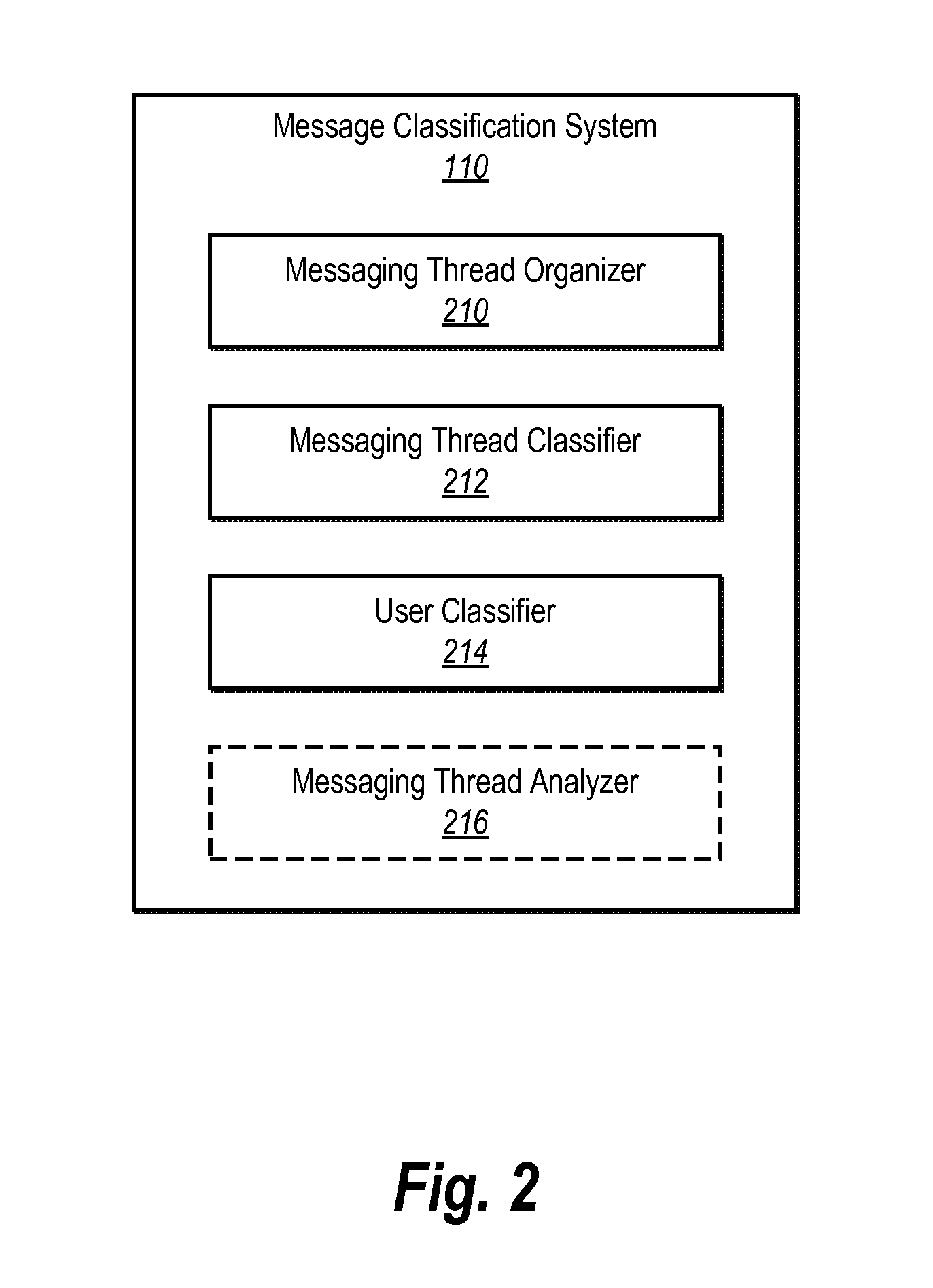Organizing and classifying social media conversations to improve customer service
a social media and conversation technology, applied in the field of social media posts, can solve the problems of social media posts that can span days, weeks, or even months, and business may struggle to address each issue posted in the social media discussion, and achieve the effect of improving customer servi
- Summary
- Abstract
- Description
- Claims
- Application Information
AI Technical Summary
Benefits of technology
Problems solved by technology
Method used
Image
Examples
Embodiment Construction
[0026]One or more embodiments described herein include a message classification system that allows businesses to improve customer service through intelligent classification of social media messages. To illustrate, the message classification system of may identify a social media messaging discussion that includes messages between a social media user (e.g., a customer or potential customer) and a representative (e.g., a customer service representative or agent). The message classification system may detect messages between the social media user and the representative that share a common context. The message classification system can then organize messages that share a common context into a messaging thread. Additionally, the message classification system may analyze messages within the messaging thread to identify content, such as a keyword, a question, positive or negative user sentiment, and / or a classification tag selected by a representative. The message classification system may ...
PUM
 Login to View More
Login to View More Abstract
Description
Claims
Application Information
 Login to View More
Login to View More - R&D
- Intellectual Property
- Life Sciences
- Materials
- Tech Scout
- Unparalleled Data Quality
- Higher Quality Content
- 60% Fewer Hallucinations
Browse by: Latest US Patents, China's latest patents, Technical Efficacy Thesaurus, Application Domain, Technology Topic, Popular Technical Reports.
© 2025 PatSnap. All rights reserved.Legal|Privacy policy|Modern Slavery Act Transparency Statement|Sitemap|About US| Contact US: help@patsnap.com



